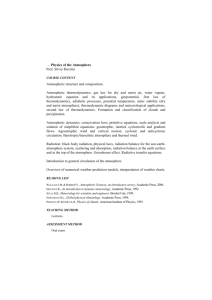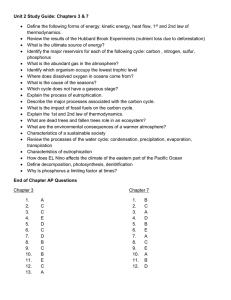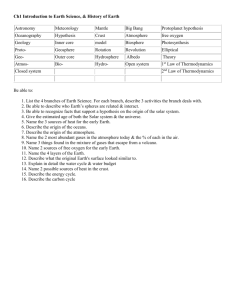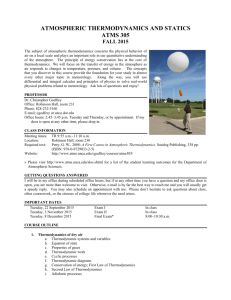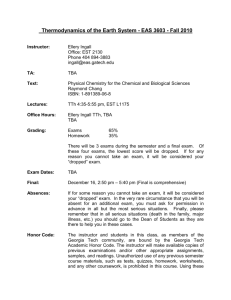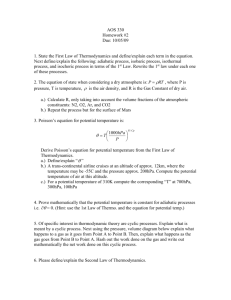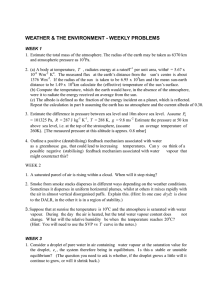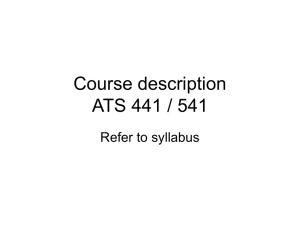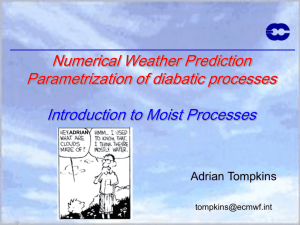GMR 6102 Thermodynamics and Cloud Physics
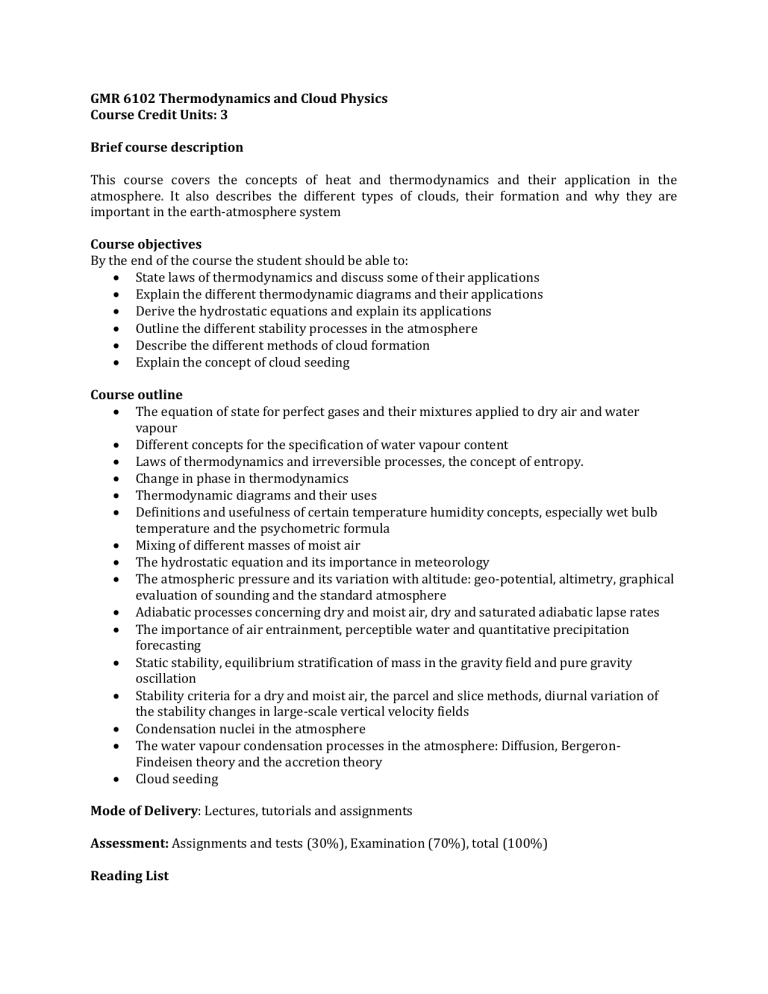
GMR 6102 Thermodynamics and Cloud Physics
Course Credit Units: 3
Brief course description
This course covers the concepts of heat and thermodynamics and their application in the atmosphere. It also describes the different types of clouds, their formation and why they are important in the earth-atmosphere system
Course objectives
By the end of the course the student should be able to:
State laws of thermodynamics and discuss some of their applications
Explain the different thermodynamic diagrams and their applications
Derive the hydrostatic equations and explain its applications
Outline the different stability processes in the atmosphere
Describe the different methods of cloud formation
Explain the concept of cloud seeding
Course outline
The equation of state for perfect gases and their mixtures applied to dry air and water vapour
Different concepts for the specification of water vapour content
Laws of thermodynamics and irreversible processes, the concept of entropy.
Change in phase in thermodynamics
Thermodynamic diagrams and their uses
Definitions and usefulness of certain temperature humidity concepts, especially wet bulb temperature and the psychometric formula
Mixing of different masses of moist air
The hydrostatic equation and its importance in meteorology
The atmospheric pressure and its variation with altitude: geo-potential, altimetry, graphical evaluation of sounding and the standard atmosphere
Adiabatic processes concerning dry and moist air, dry and saturated adiabatic lapse rates
The importance of air entrainment, perceptible water and quantitative precipitation forecasting
Static stability, equilibrium stratification of mass in the gravity field and pure gravity oscillation
Stability criteria for a dry and moist air, the parcel and slice methods, diurnal variation of the stability changes in large-scale vertical velocity fields
Condensation nuclei in the atmosphere
The water vapour condensation processes in the atmosphere: Diffusion, Bergeron-
Findeisen theory and the accretion theory
Cloud seeding
Mode of Delivery: Lectures, tutorials and assignments
Assessment: Assignments and tests (30%), Examination (70%), total (100%)
Reading List
Seymour L. Hess: Introduction to Theoretical Meteorology
D. J. Tritton: Physical Fluid Dynamics
Louis J. Battan: Cloud Physics; A popular Introduction to Meteorology
Prupaccher and Klett: Microphysics of Clouds and Precipitation
